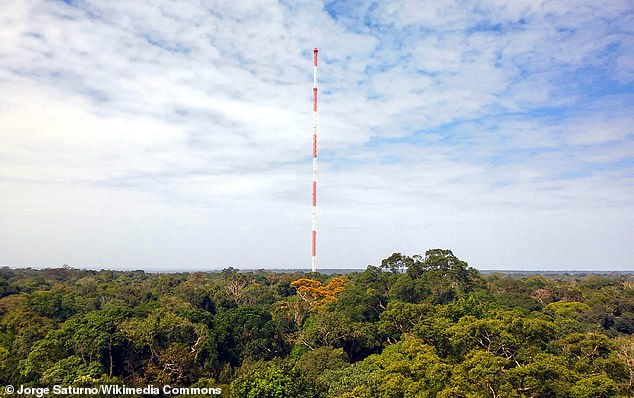Toxic ‘forever chemicals’ have reached the Amazon: Scientists discover PFAS for the first time in the world’s largest tropical rainforest – and warn they could be fatal to the plants and animals that live there

They have been found in food, drinking water, soil and even in the human body.
But now scientists have discovered a toxic group of chemicals known as PFAS in the Amazon, the world’s largest rainforest.
The researchers from Coventry University say they have detected PFAS in the air around trees in the Amazon, absorbing them potentially fatally.
PFAS – or per- and polyfluoroalkyl substances – are called “forever chemicals” because they are designed so that they do not break down in the environment and can be inhaled by humans.
Studies have linked PFAS to infertility, behavioral problems, birth defects, high cholesterol levels and even several forms of cancer, including kidney, testicular and ovarian cancer.

Harmful chemicals that last so long they’re being called ‘forever chemicals’ have been found in the atmosphere of the Amazon rainforest for the first time, scientists report
The new study was led by Dr Ivan Kourtchev from Coventry University’s Research Center for Agroecology, Water and Resilience.
He called the occurrence of “forever chemicals” in the atmosphere above the pristine Amazon rainforest “shocking.”
But Dr. Kourtchev and colleagues are still working to identify the exact health risk to the rainforest’s plants.
“The Amazon is a place with unique vegetation and wildlife, so these PFAS could have an impact there,” Dr. Kourtchev said.
‘In sensitive ecosystems with rare or endangered species, such disturbances can have devastating consequences for biodiversity and species survival.’
It is estimated that more than 30 million people live in the Amazon who would also be affected by inhaling PFAS.
“If our bodies confuse this chemical with our hormones, we can become infertile, and if unique animals or vegetation are affected, it can stop their reproduction,” says Dr. Kourtchev.
For the study, air samples were collected at the top of the 300-meter-high Amazon Tall Tower Observatory, which is about the same height as the Eiffel Tower in Paris.

Air samples were taken at the Amazon Tall Tower Observatory (pictured) in the Brazilian rainforest

The tower, about the same height as Paris’ most famous landmark, is located deep in the Amazon rainforest
The Amazon Tall Tower Observatory is located in the middle of the rainforest, about 150 km from Manaus, one of the largest cities in Brazil.
The samples were then sent back to Coventry University, where Dr Kourtchev analyzed them using a sensitive technique he had previously developed.
‘We collected samples at the very top of the tower and also at tree canopy level – about 42 metres [137 feet]the academic said.
“What was shocking to us was that we saw PFAS – we didn’t expect that and we saw more at the top of the tower.
‘If PFAS were emitted locally, they would have to be lower in the tower.
“This means that PFAS have been transported long distances and brought from somewhere.
“It was very confusing for us.”
PFAS have been found in the blood of people and wildlife in remote areas of the world, as well as in freshwater lakes that provide drinking water.
But now we hope Dr. Kourtchev and international colleagues say their research could help discover how PFAS are transported.
“This study presents the first measurements of PFAS in the atmosphere of the Amazon rainforest,” they say in their article, published in Science of the total environment.

PFAS chemicals can contaminate drinking water, and it is estimated that 110 million Americans (one in three) consume drinking water contaminated with these chemicals
‘This study provides valuable insights into the long-range transport of the anthropogenic ‘forever chemical’ to a remote natural ecosystem and should increase awareness of potential environmental impacts.’
PFAS are used to make nonstick frying pans, food packaging including pizza boxes and popcorn bags, coatings on paper and glues, among other things.
They have been linked to adverse health effects and, once inhaled, can remain in our bodies for years
This means they cause problems including infertility and developmental problems, especially in pregnant women and their babies.




